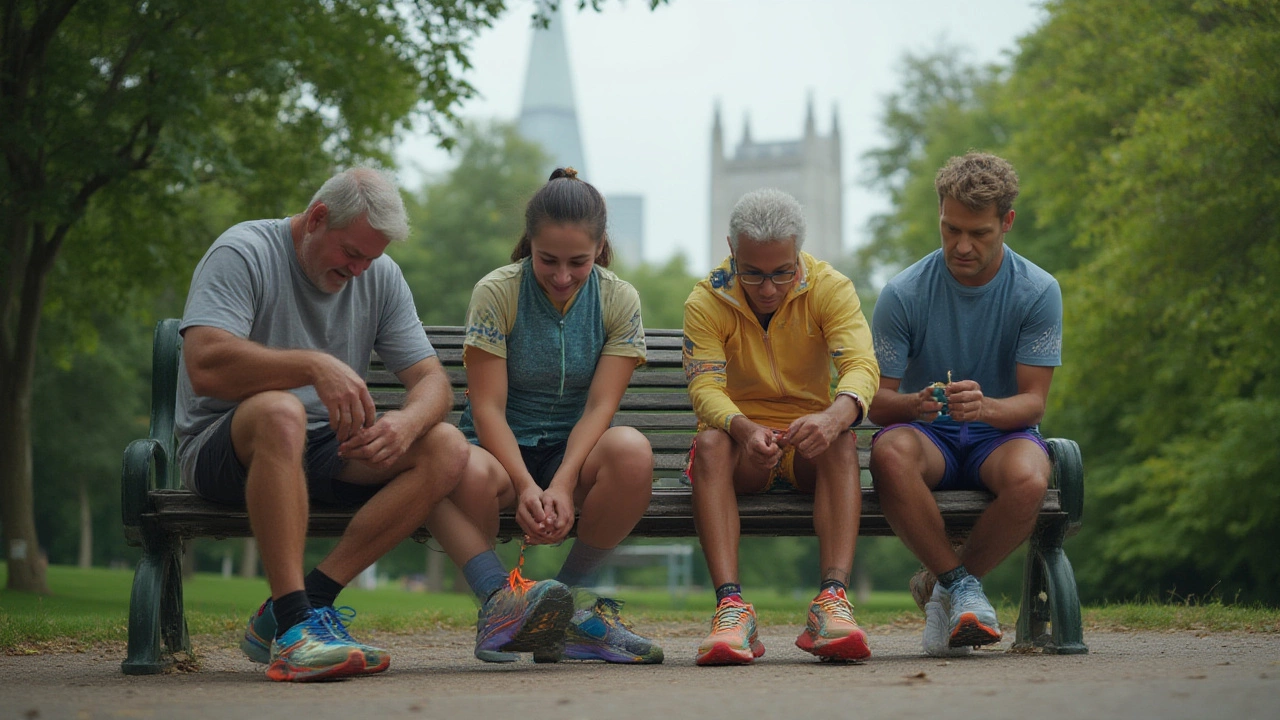
Running Footwear: How to Choose the Right Pair for Your Game
Whether you’re clocking miles on the pavement or hitting trails, the shoes on your feet decide how comfortable and safe the run will be. A bad pair can bring pain, slow you down, and even cause injuries. The good news? Picking the right running footwear isn’t a mystery – just a few practical steps.
Key Factors to Look At When Shopping
Foot type matters. Most runners fall into one of three categories: neutral, overpronator, or underpronator. Neutral feet land softly and roll naturally; overpronators need extra support on the inner side; underpronators (or supinators) benefit from cushioning that helps absorb impact. If you’ve never had a gait analysis, many bike shops or sports stores will do a quick check for free.
Terrain dictates shoe design. Road shoes are lightweight with smooth soles for pavement, while trail shoes have grippy lugs and reinforced toe caps. If you split time between both, a versatile hybrid can work, but don’t expect a trail shoe to feel as fast on the road.
Fit is non‑negotiable. A shoe that’s a half size too big might seem roomy, but it can cause blisters, toe slippage, and wasted energy. Aim for about a thumb’s width of space between the longest toe and the front of the shoe. Try on shoes late in the day – feet swell, so you’ll get a realistic feel.Another common mistake is ignoring the sock thickness you’ll wear. If you usually run with thick, cushioned socks, bring them along when you try shoes. That simple test can keep you from buying a pair that feels too tight later.
Top Picks and What Makes Them Stand Out
Asics Gel‑Nimbus series. Asics blends responsive cushioning with a snug, supportive fit. The Gel‑Nimbus is a favorite for neutral runners who want a soft ride without losing stability. Reviewers note the shoe holds up well after 300‑plus miles.
Brooks Ghost. Known for its balanced cushioning, the Ghost works for a wide range of foot types. Its engineered mesh keeps the foot cool, and the 3D Fit Print adds a secure feel without feeling tight.
New Balance Fresh Foam 1080. This shoe leans into plushness, making it a solid pick for long‑distance runs. The Fresh Foam midsole spreads impact evenly, which helps protect the knees on those later‑mile miles.
Saucony Endorphin Speed. If you’re chasing speed, the Endorphin Speed adds a slight rocker plate that boosts turnover. It’s still comfortable enough for easy runs, so you can keep it in the rotation.
When you read reviews, look for comments about durability, break‑in period, and how the shoe feels after a few weeks. Real‑world feedback often tells you more than the brand’s hype.
Finally, keep your shoes healthy. Let them air‑dry after each run, and give them a quick wipe‑down to remove mud or sweat. Rotate between two pairs if you run frequently – this lets each pair decompress and prolongs their lifespan.
Choosing the right running footwear is all about matching shoe features to your foot, your run style, and the surfaces you tackle. Take a few minutes to test fit, check the cushioning, and read a couple of trusted reviews. When the shoe feels right from the first step, you’re ready to log those miles comfortably and safely.
